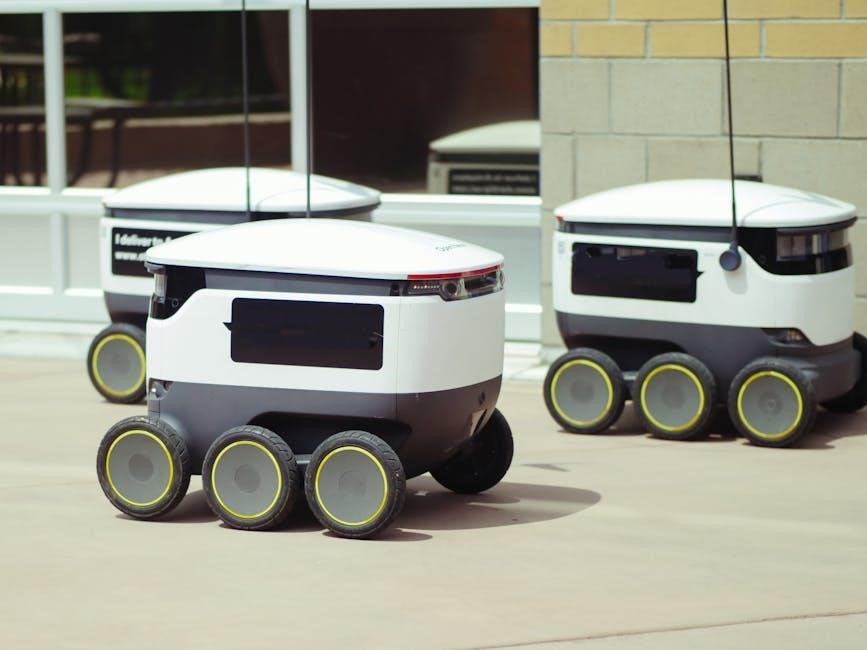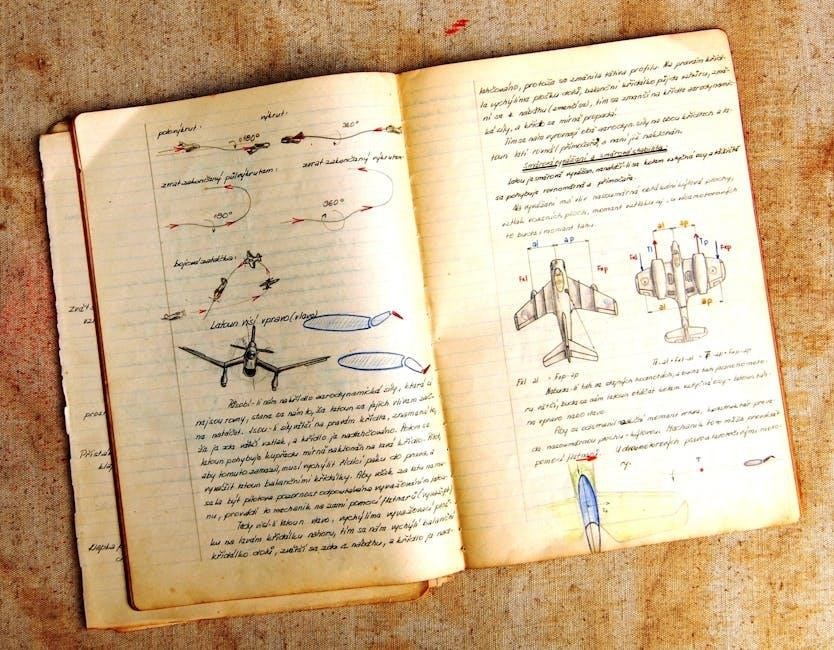Manual and automatic transmissions offer distinct driving experiences. Manuals provide better fuel efficiency and control, while automatics offer convenience and reduced fatigue, making the choice depend on lifestyle and preferences.
Basics of Manual and Automatic Transmissions
Manual transmissions require drivers to manually shift gears using a clutch pedal and gearshift, offering control over speed and torque. Automatic transmissions shift gears automatically, simplifying driving, especially in traffic. Manuals are typically more fuel-efficient and cost-effective, with lower maintenance needs. However, they demand more skill and practice. Automatics reduce driver fatigue and are easier for beginners, making them ideal for urban environments. The choice depends on personal preference, driving conditions, and lifestyle, balancing convenience, control, and efficiency.

Pros and Cons of Manual Transmissions
Manual transmissions offer better fuel efficiency, cost-effectiveness, and driver engagement but require more skill and can have higher long-term maintenance costs;
Fuel Efficiency and Cost-Effectiveness
Manual transmissions are generally more fuel-efficient than automatics, especially in city driving, due to better control over gear shifts. Additionally, manual cars are often cheaper to purchase and maintain, with lower repair costs. However, modern automatics have narrowed the fuel efficiency gap, and some high-performance automatics now rival manuals. Cost-effectiveness also extends to insurance, as manual vehicles typically have lower premiums. Despite these advantages, the increasing complexity of automatic transmissions has made them more efficient and reliable, though manuals still hold a slight edge in cost and efficiency for drivers willing to invest time in learning.
Driver Engagement and Control
Manual transmissions provide a more engaging driving experience, as they require active participation through clutch operation and gear shifting. This hands-on approach allows drivers to feel more connected to the vehicle, offering better control, especially in dynamic driving conditions. The ability to manually select gears can enhance precision and responsiveness, making it a preferred choice for enthusiasts and those who enjoy driving on winding roads or in performance scenarios. However, this increased engagement comes with a learning curve, as mastering the clutch and gear coordination takes practice. In contrast, automatic transmissions simplify the process, reducing driver input and fatigue, which can be beneficial in heavy traffic or urban environments where frequent stopping and starting occur.
Maintenance and Repair Costs
Manual transmissions typically have lower maintenance and repair costs compared to automatics. With fewer complex components, manuals are less prone to expensive failures. Repairs for manuals, such as replacing the clutch, are generally more affordable and less frequent. Automatic transmissions, however, have intricate systems like torque converters and hydraulic controls, which can lead to higher repair bills. While modern automatics are more reliable, their maintenance costs still exceed those of manuals over time. Additionally, manuals often require less frequent fluid changes and have simpler designs, making them more cost-effective in the long run. This makes manual transmissions a more budget-friendly option for drivers prioritizing affordability and simplicity.

Pros and Cons of Automatic Transmissions

Automatic transmissions offer smooth operation and ease of use, reducing driver fatigue. However, they are generally more expensive and less fuel-efficient than manual transmissions.

Ease of Use and Convenience
Automatic transmissions are highly praised for their ease of use and convenience. They eliminate the need for manual gear shifting, simplifying the driving process, especially in heavy traffic or hilly terrain. With no clutch pedal required, drivers can focus solely on steering and braking, reducing fatigue and stress. This makes automatics ideal for urban driving, where frequent stops and starts are common. Additionally, automatics are more accessible for new drivers or those who prefer a more relaxed driving experience. The convenience factor is further enhanced by smooth acceleration and seamless gear transitions, providing a comfortable ride in various conditions. Overall, automatic transmissions cater to drivers seeking a hassle-free and straightforward driving experience.
Performance and Power Delivery
Automatic transmissions often deliver smoother and more consistent power, especially in modern vehicles equipped with advanced torque converters and adaptive systems. They can optimize gear shifts for acceleration, making them suitable for high-performance cars. Automatics also excel in maintaining optimal engine speed during uphill climbs or when towing, ensuring steady power delivery. However, traditional automatics may experience slight delays in gear changes compared to manuals, which can affect sporty driving. Recent advancements, such as dual-clutch automatics, have narrowed this gap, offering rapid shifts and enhanced performance. Overall, automatics provide reliable power delivery with minimal driver input, catering to those prioritizing ease and smooth acceleration over direct control. This makes them a strong choice for drivers seeking a balance between performance and comfort.
Safety and Reduced Driver Fatigue
Automatic transmissions contribute significantly to safety and reduced driver fatigue. By eliminating the need for manual gear shifts, automatics allow drivers to focus more on the road and less on operating the vehicle. This is particularly beneficial in heavy traffic or hilly terrain, where frequent shifting can be tiring. Automatics also reduce the likelihood of stalling, especially for inexperienced drivers, which can prevent accidents in tricky situations. Furthermore, modern automatics often include safety features like adaptive cruise control and automatic emergency braking, enhancing overall driving safety. The reduced physical and mental effort required to operate an automatic vehicle makes long drives more comfortable and less fatiguing, ultimately reducing the risk of driver error caused by exhaustion. This makes automatic transmissions a preferable choice for prioritizing safety and driver well-being.

Comparing Manual and Automatic Transmissions
Manual and automatic transmissions cater to different driving preferences. Manuals offer better fuel efficiency and control, while automatics provide convenience and ease, making the choice depend on lifestyle and driving conditions.

Cost Implications and Budget Considerations
Manual transmissions are typically more affordable to purchase and maintain than automatics; They have fewer components, reducing production costs and repair expenses. Automatics, while more convenient, are generally pricier upfront and may incur higher maintenance costs due to their complex systems. However, modern automatics with advanced technology can sometimes match or even exceed the fuel efficiency of manuals, potentially offsetting higher initial costs over time. Additionally, resale value often favors manual transmissions in enthusiast markets, while automatics may be more sought after in urban or convenience-focused regions. Budget considerations also extend to insurance, as manual cars are sometimes cheaper to insure. Ultimately, the choice between manual and automatic involves balancing immediate and long-term financial priorities with personal preferences and driving habits.
Fuel Efficiency and Environmental Impact
Manual transmissions have historically offered better fuel efficiency compared to automatics, especially in city driving, due to the driver’s control over gear shifts. However, advancements in automatic technology, such as continuously variable transmissions (CVTs) and dual-clutch systems, have narrowed this gap. Modern automatics now often match or even surpass the fuel economy of manuals in certain conditions. Environmental impact is closely tied to fuel efficiency, with more efficient transmissions producing fewer emissions. Additionally, hybrid vehicles, which often use automatic systems, further reduce environmental impact; As eco-friendly technologies evolve, the choice between manual and automatic becomes less about fuel efficiency and more about personal preference and driving style, though manuals still hold a slight edge in optimizing fuel use in skilled hands.
Driver Lifestyle and Preferences
Driver lifestyle and preferences significantly influence the choice between manual and automatic transmissions. For those who value driving engagement and control, manual transmissions are often preferred, offering a more connected and exhilarating experience, especially on winding roads or in performance driving. On the other hand, automatics cater to convenience, reducing driver fatigue in heavy traffic and making urban commutes less stressful. Lifestyle factors such as daily driving conditions, commute length, and personal enjoyment of driving also play a role. While younger drivers might lean towards automatics for ease, enthusiasts often opt for manuals to maintain a traditional driving feel. Ultimately, the decision aligns with individual priorities, balancing practicality with personal satisfaction and driving pleasure.
Choosing between manual and automatic transmissions depends on lifestyle, driving conditions, and personal preference. Manual offers control and efficiency, while automatic provides convenience and reduced fatigue, shaping resale value and future trends.
Resale Value and Future Trends
Manual transmissions often hold higher resale value due to enthusiast demand, while automatics are increasingly popular. Future trends suggest a rise in automatics and electric vehicles, potentially phasing out manuals. However, manuals may retain niche appeal, balancing market dynamics and technological advancements.